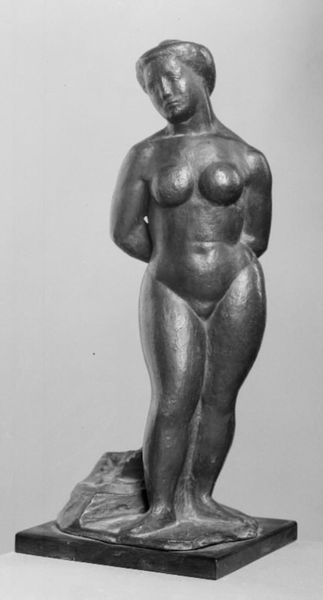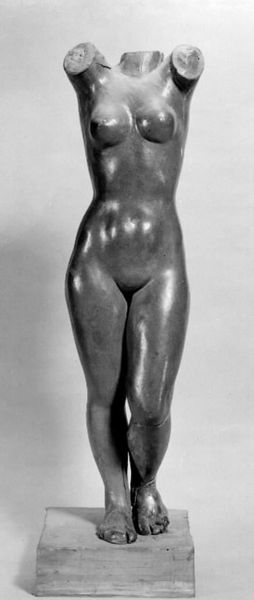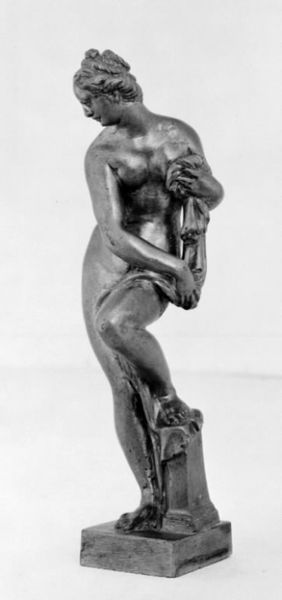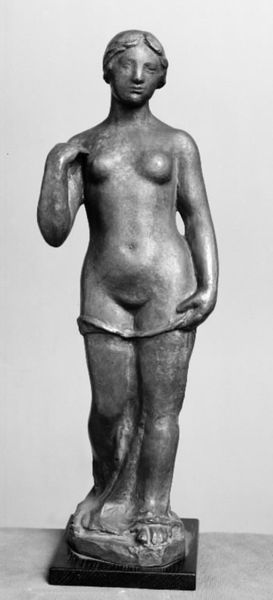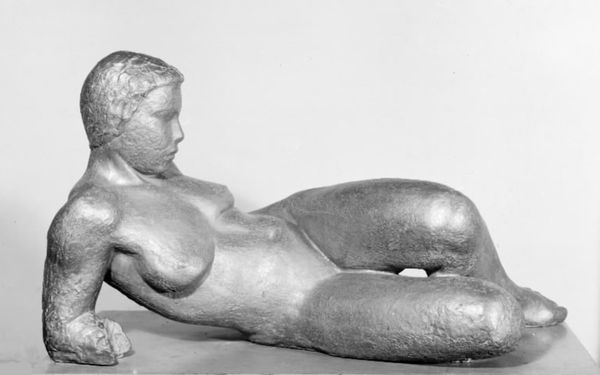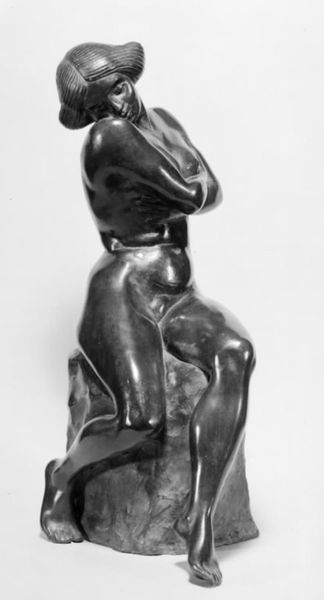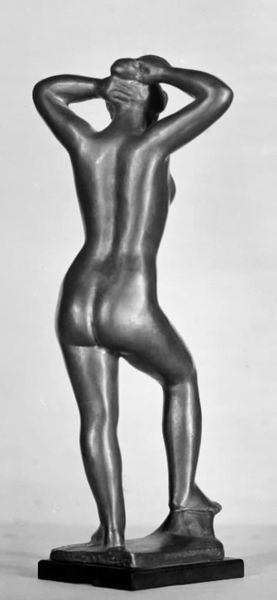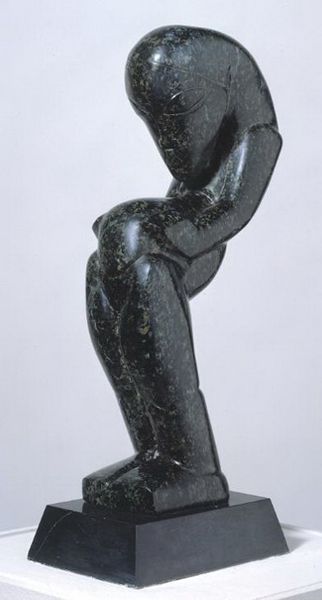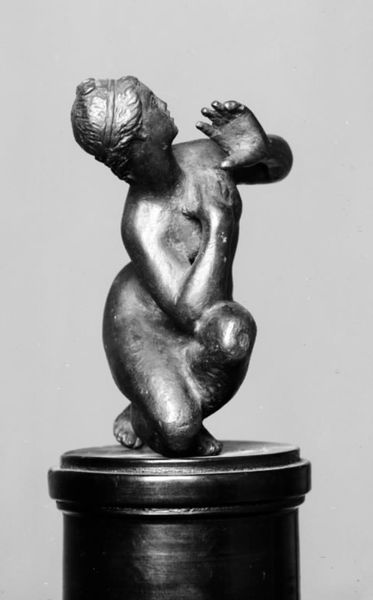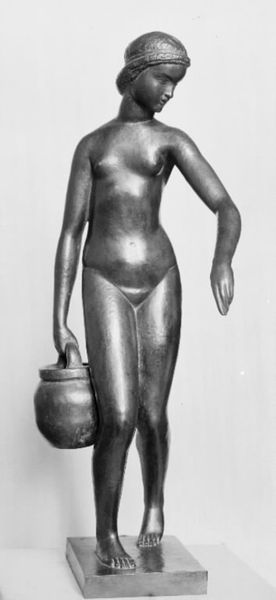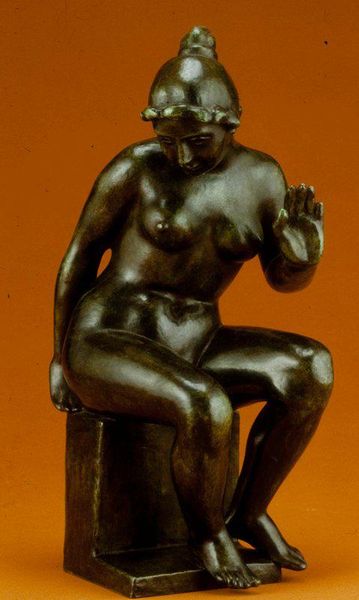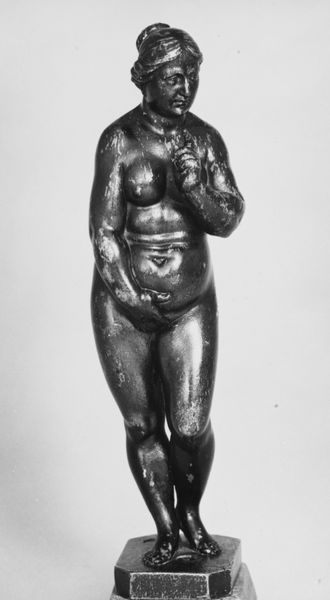
bronze, sculpture
#
portrait
#
sculpture
#
bronze
#
figuration
#
sculpture
#
symbolism
#
nude
#
realism
Dimensions: 28.5 cm (height) x 14.8 cm (width) x 12.6 cm (depth) (Netto)
Editor: Here we have Aristide Maillol’s "Seated Nude Woman. Leda," a bronze sculpture created between 1900 and 1904. I'm struck by the solidity of the figure, and the rather rough, almost unfinished texture of the bronze. What does this sculpture bring to mind for you? Curator: Immediately, I consider the labor embedded within this piece. Think about the lost-wax casting process typically employed for bronze sculptures – the physical exertion, the collaboration between artist and foundry workers. This challenges the notion of Maillol as a solitary genius, drawing attention to the social context of artistic production. Editor: So, you see the hand of the maker, beyond just Maillol himself? Curator: Precisely. And consider the bronze itself: its mining, smelting, the global trade networks that made it available in Maillol's studio. This links the artwork to broader economic and industrial systems. The sculpture's texture, as you noted, is key. Is it truly "unfinished," or does it purposefully reveal the material's inherent qualities, its resistance and malleability? This challenges traditional academic standards for bronze work, which would favor high polish. Editor: That's fascinating, the idea that the roughness is a deliberate statement about the material itself. Was this a common practice at the time? Curator: Not uniformly. Maillol was part of a broader shift where artists began valuing materiality and process, questioning the hierarchical division between "high art" and "craft." One must remember, Rodin also began pushing these boundaries during a similar time period. It suggests an interest in authentic engagement with materials. And ultimately asks, what is "value" in the art world? The art world has moved far past that since that time, in a different system with different economic outcomes. Editor: That definitely gives me a lot to think about, especially concerning how we value art and the often unseen labor that goes into it. Thanks! Curator: Indeed. By looking at the materials and the means of production, we gain a deeper understanding of the artwork and its connection to society.
Comments
No comments
Be the first to comment and join the conversation on the ultimate creative platform.
